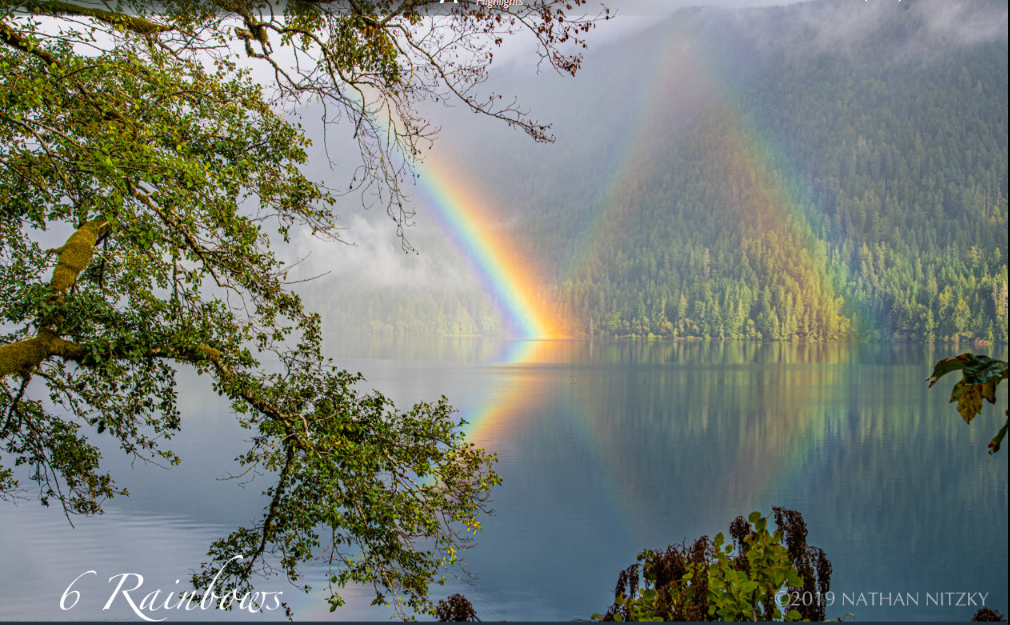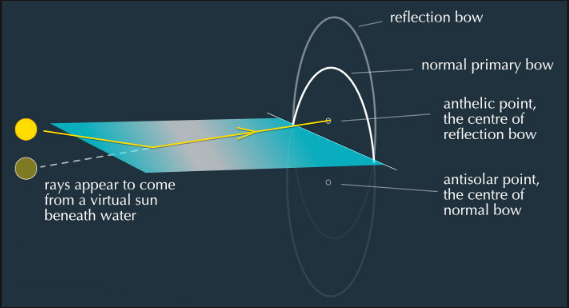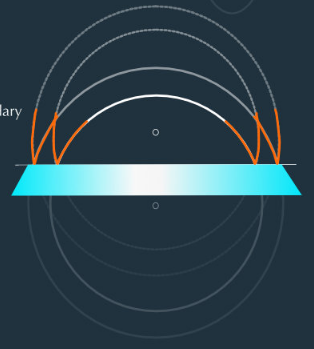Reflection and Reflected Rainbows
Reflection and Reflected Rainbows: A Phenomenon of Light and Water
Rainbows have long captivated our imagination with their vibrant colors and ethereal beauty. But did you know that there is more to rainbows than meets the eye? In this article, we will explore the fascinating world of reflection and reflected rainbows, shedding light on this captivating atmospheric optics phenomenon.
When sunlight interacts with water droplets in the air, it creates the mesmerizing display we know as a rainbow. However, there are instances where sunlight reflects off a water surface before intercepting raindrops, resulting in a unique type of rainbow known as a reflection bow. These reflection bows can be observed when sunlight is reflected by a lake, the calm sea, a wave-wetted sandy beach, or even wet parking lots and roofs.
One remarkable aspect of reflection bows is their position in the sky. While the ordinary primary rainbow is centered on a point directly opposite the sun, known as the antisolar point, reflection bows are higher in the sky and centered on a point opposite the sun but at the same altitude, known as the anthelic point. This distinction gives reflection bows their characteristic appearance and sets them apart from their more commonly observed counterparts.
The formation of reflection bows can vary depending on the location of the water surface. If the water is behind you, the entire reflection bow can be seen. However, if the water is in front of you, only the lower part of the reflection bow becomes visible. This difference in visibility adds to the intrigue and mystique of these elusive optical phenomena.
To truly appreciate the beauty of reflection bows, it is essential to understand their relationship with traditional rainbows. The bows that appear to be beneath the water's surface are not true reflections of rainbows in the sky. This is because rainbows themselves do not physically exist; they are optical illusions created by our eyes and brains when specific bundles of light rays from raindrops reach our eyes.
The formation of reflection bows involves a complex interplay of light and water. As sunlight reflects off the water surface, it undergoes refraction and dispersion, just like in traditional rainbow formation. The reflected light then interacts with raindrops, creating a secondary bending and splitting of the light, resulting in the formation of a reflection bow. This intricate process adds to the intricacy and beauty of these phenomena.
When observing reflection bows, one may notice a zigzag pattern near the water's edge. This pattern is caused by the combined effects of reflection and refraction as light passes through multiple interfaces between air, water, and the raindrops. It is a testament to the intricate nature of atmospheric optics and the captivating ways in which light interacts with its surroundings.
In conclusion, reflection and reflected rainbows offer a fascinating glimpse into the complexities of atmospheric optics. These unique optical phenomena, formed through the interaction of sunlight, water surfaces, and raindrops, create stunning displays that captivate our senses. By understanding the science behind reflection bows, we can deepen our appreciation for the wonders of the natural world and marvel at the beauty that surrounds us. So, the next time you catch a glimpse of a reflection bow dancing upon the water's surface, take a moment to ponder the intricate interplay of light and water that brings this enchanting phenomenon to life.

Nathan Nitzky (1, 2) captured these bows at Lake Crescent, Washington
state, USA.
The bright bow above the water at centre is the 'ordinary' primary. At furthest right is the normal secondary rainbow with its reversed colours. Between them, and pointing in a different direction, is a reflection bow formed by sunlight reflected by the lake surface and then intercepting raindrops. To those raindrops the upward going sun-rays appear to come from a second sun shining from below the water surface.
The ordinary primary rainbow is a 42 degree radius dísk centred on a point directly opposite the sun - the antisolar point.
Reflection bows are higher in the sky and centred on a point opposite the sun but at the same altitude - the anthelic point.
The water reflecting the sun can be behind or sometimes in front of you. When in front, only the lower part of the reflection bow is seen.
Reflection bows can be formed by lakes, the sea when it is very calm, a wave wetted sandy beach, wet parking lots or roofs.


Reflection primary and secondary bows making a characteristic zigzag pattern near the water.
The bows 'beneath' the water are not really reflections of rainbows in the sky. They cannot be because rainbows have no physical' existence, they are only eye-brain creations produced by bundles of rays from particular raindrops reaching the eye.
Their formation is another story.
Note: this article has been automatically converted from the old site and may not appear as intended. You can find the original article here.
Reference Atmospheric Optics
If you use any of the definitions, information, or data presented on Atmospheric Optics, please copy the link or reference below to properly credit us as the reference source. Thank you!
-
<a href="https://atoptics.co.uk/blog/reflection-and-reflected-rainbows/">Reflection and Reflected Rainbows</a>
-
"Reflection and Reflected Rainbows". Atmospheric Optics. Accessed on April 19, 2024. https://atoptics.co.uk/blog/reflection-and-reflected-rainbows/.
-
"Reflection and Reflected Rainbows". Atmospheric Optics, https://atoptics.co.uk/blog/reflection-and-reflected-rainbows/. Accessed 19 April, 2024
-
Reflection and Reflected Rainbows. Atmospheric Optics. Retrieved from https://atoptics.co.uk/blog/reflection-and-reflected-rainbows/.